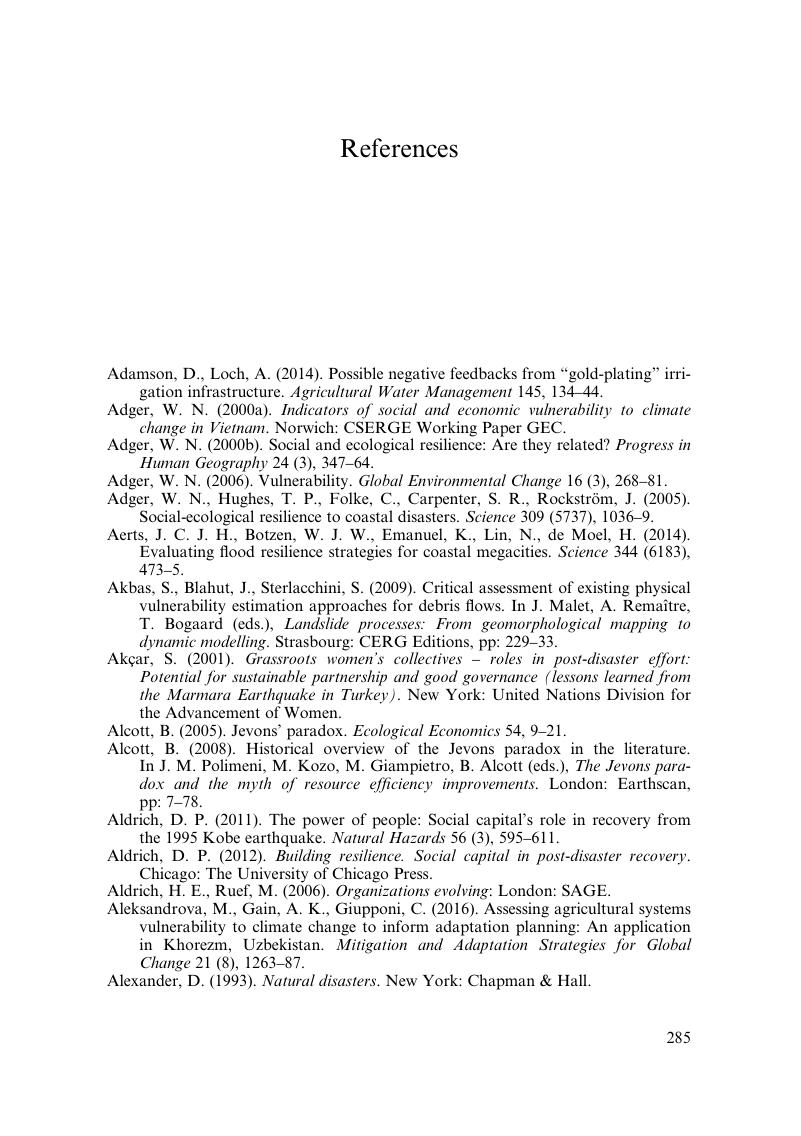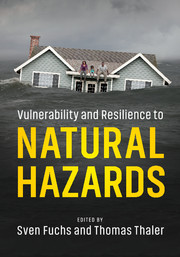Book contents
- Reviews
- Vulnerability and Resilience to Natural Hazards
- Vulnerability and Resilience to Natural Hazards
- Copyright page
- Contents
- Figures
- Tables
- Contributors
- 1 Introduction
- 2 Vulnerability
- 3 Physical Vulnerability
- 4 Social Vulnerability
- 5 Economic Vulnerability
- 6 Institutional Vulnerability
- 7 Resilience: An Introduction
- 8 Physical Resilience
- 9 Social Resilience
- 10 Economic Resilience
- 11 Institutional Resilience
- 12 Linkages between Vulnerability and Resilience
- 13 Synthesis and Conclusion
- Notes
- References
- Index
- Plate
- References
References
Published online by Cambridge University Press: 03 March 2018
- Reviews
- Vulnerability and Resilience to Natural Hazards
- Vulnerability and Resilience to Natural Hazards
- Copyright page
- Contents
- Figures
- Tables
- Contributors
- 1 Introduction
- 2 Vulnerability
- 3 Physical Vulnerability
- 4 Social Vulnerability
- 5 Economic Vulnerability
- 6 Institutional Vulnerability
- 7 Resilience: An Introduction
- 8 Physical Resilience
- 9 Social Resilience
- 10 Economic Resilience
- 11 Institutional Resilience
- 12 Linkages between Vulnerability and Resilience
- 13 Synthesis and Conclusion
- Notes
- References
- Index
- Plate
- References
Summary

Information
- Type
- Chapter
- Information
- Vulnerability and Resilience to Natural Hazards , pp. 285 - 332Publisher: Cambridge University PressPrint publication year: 2018
